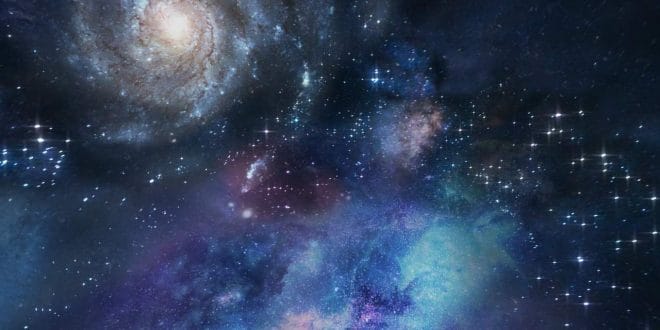Summary:
A black hole is a mysterious object in space where gravity is so strong that nothing, not even light, can escape from it. It forms when a massive star collapses in on itself. Black holes can be found in the centers of galaxies, including our own Milky Way, and they play a crucial role in shaping the structure and behavior of galaxies.
Supermassive black holes play a crucial role in the evolution of galaxies. They influence the movement of stars and gas within galaxies, regulate star formation, and shape the structure of galaxies over time.
Explaining Black Holes:
Imagine a place in space where gravity is so strong that even light cannot escape. That’s a black hole! It’s like a cosmic vacuum cleaner that sucks in everything around it, including stars, gas, and even planets.
How Black Holes Form:
Black holes form when massive stars run out of fuel and collapse under their own gravity. When a star dies, it can explode in a powerful supernova explosion, leaving behind a dense core called a neutron star or collapsing even further to form a black hole.
Types of Black Holes:
There are different types of black holes, depending on their size and how they formed. Stellar-mass black holes are relatively small and form from the remnants of massive stars. Supermassive black holes, on the other hand, are millions or even billions of times more massive than the Sun and are found at the centers of galaxies.
Black Holes and Galaxies:
Black holes and galaxies are closely related—they often go hand in hand! Many galaxies, including our own Milky Way, have supermassive black holes lurking at their centers. These supermassive black holes can have a profound impact on the structure and behavior of galaxies.
Galactic Dynamics:
The presence of a supermassive black hole can influence the movement of stars and gas within a galaxy. It can also affect the growth and evolution of the galaxy over time. In some cases, the intense gravity of a black hole can cause stars to orbit around it in a swirling dance, forming a region known as a galactic bulge.
Galactic Evolution:
Black holes play a crucial role in the evolution of galaxies. They can regulate the formation of new stars by heating up and dispersing gas clouds, or they can trigger bursts of star formation by drawing in nearby gas and dust. Understanding the relationship between black holes and galaxies is essential for unraveling the mysteries of cosmic evolution.
Black holes are some of the most mysterious and intriguing objects in the universe. From their formation in the hearts of dying stars to their role in shaping the structure and behavior of galaxies, black holes continue to captivate the imagination of scientists and stargazers alike.
What role do supermassive black holes play in the evolution of galaxies?
Explaining the Role of Supermassive Black Holes:
Imagine a giant cosmic monster lurking at the center of a galaxy, gobbling up everything in its path. That’s kind of what a supermassive black hole does, but instead of eating stars and planets, it affects how galaxies grow and change over time.
Influencing Galactic Dynamics:
Supermassive black holes have incredibly strong gravity, which can affect the movement of stars and gas within a galaxy. As stars orbit around the black hole, they can be flung out into space or pulled in closer, depending on their speed and trajectory. This can create a swirling motion of stars and gas around the black hole, known as a galactic bulge.
Regulating Star Formation:
Supermassive black holes can also regulate the formation of new stars within a galaxy. When gas and dust fall into a black hole’s gravitational grip, they heat up and release energy in the form of radiation. This radiation can heat up and disperse nearby gas clouds, preventing them from collapsing and forming new stars. In some cases, however, the intense gravity of a black hole can trigger bursts of star formation by compressing nearby gas and dust.
Shaping Galactic Structure:
Over time, the influence of a supermassive black hole can shape the overall structure of a galaxy. The swirling motion of stars and gas around the black hole can create a bulge at the center of the galaxy, while the gravitational pull of the black hole can pull nearby stars and gas into tight clusters or streams. These interactions can lead to the formation of features like spiral arms, bars, and rings within a galaxy.
Interacting with Other Galaxies:
Supermassive black holes can also interact with other galaxies, particularly during galaxy collisions and mergers. When two galaxies collide, their supermassive black holes can merge together to form an even larger black hole. This process can release a tremendous amount of energy in the form of gravitational waves and may have significant effects on the structure and evolution of the resulting galaxy.
Supermassive black holes are like cosmic architects, shaping the evolution of galaxies through their powerful gravitational influence. From influencing the movement of stars and gas to regulating star formation and shaping galactic structure, these mysterious cosmic monsters play a crucial role in shaping the diverse and dynamic universe we live in.
 Lifeved The Keys to a Better
Lifeved The Keys to a Better



 by
by